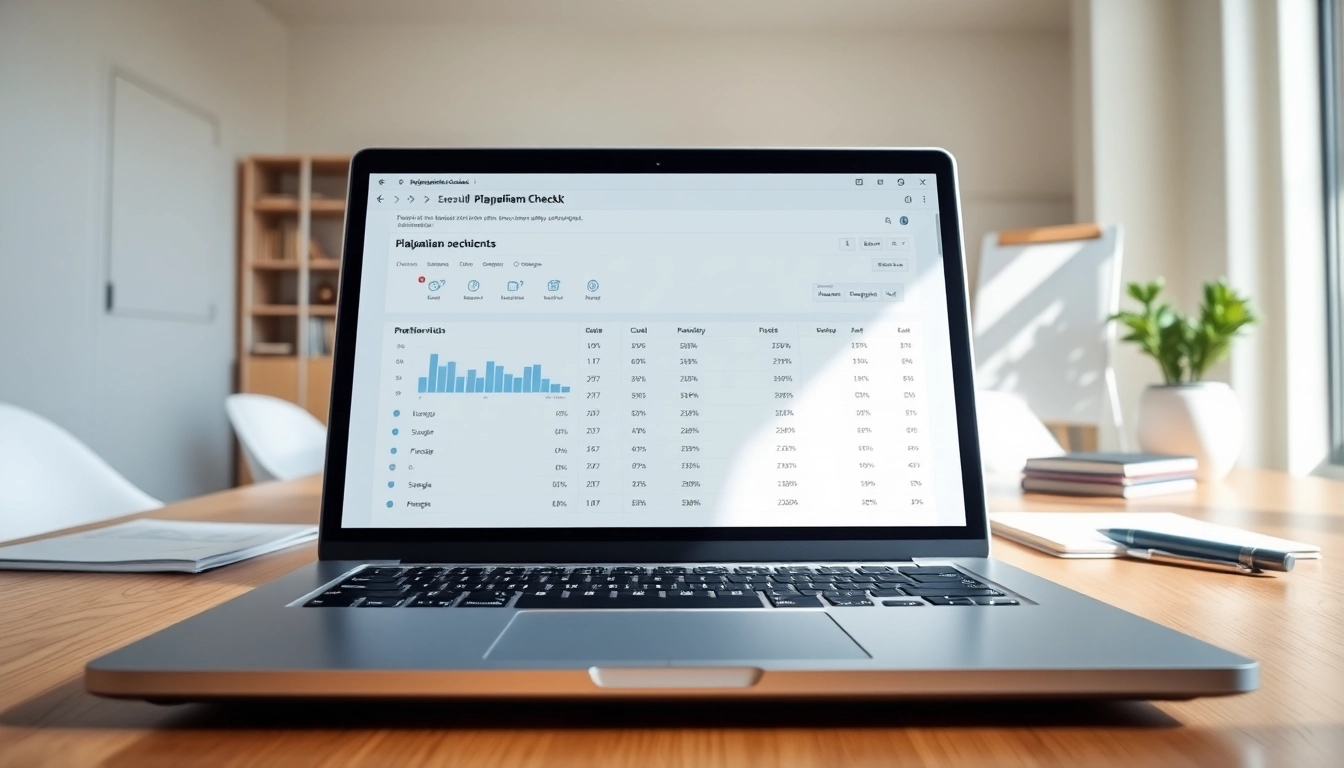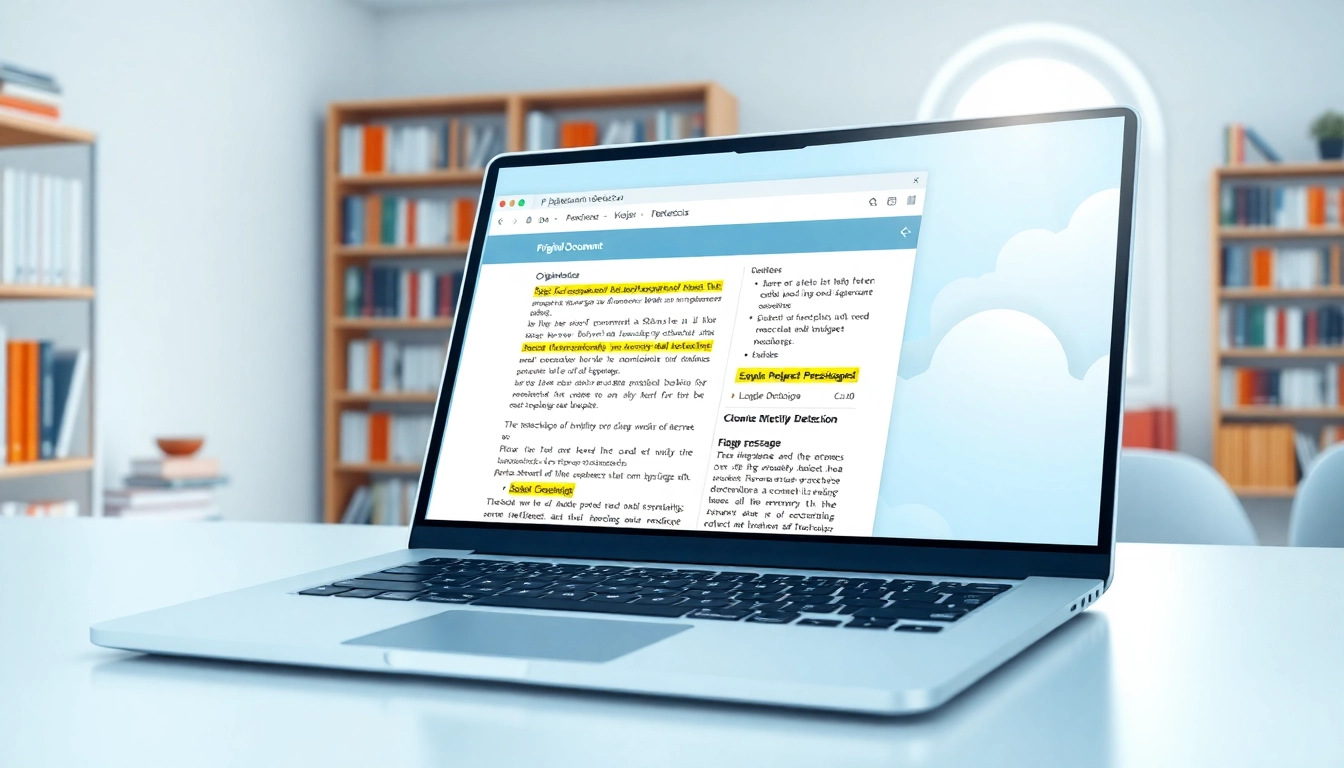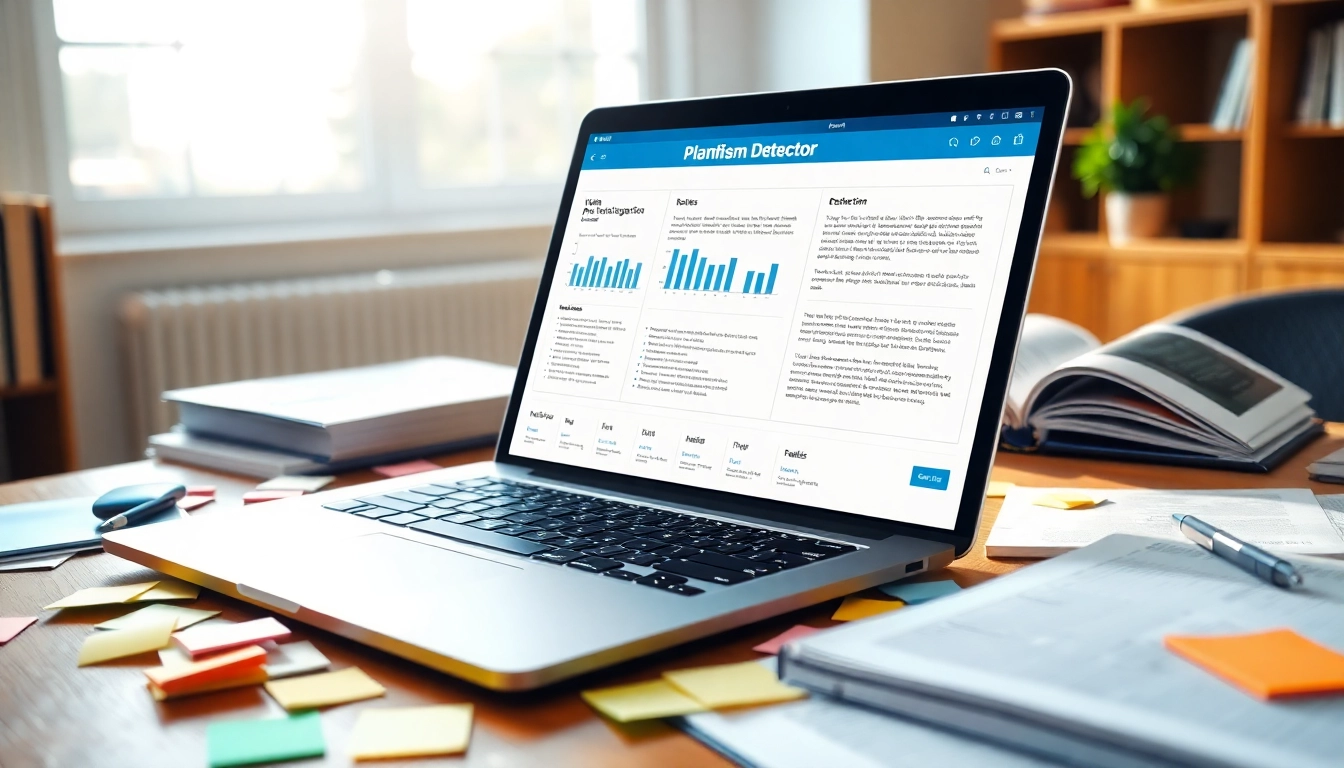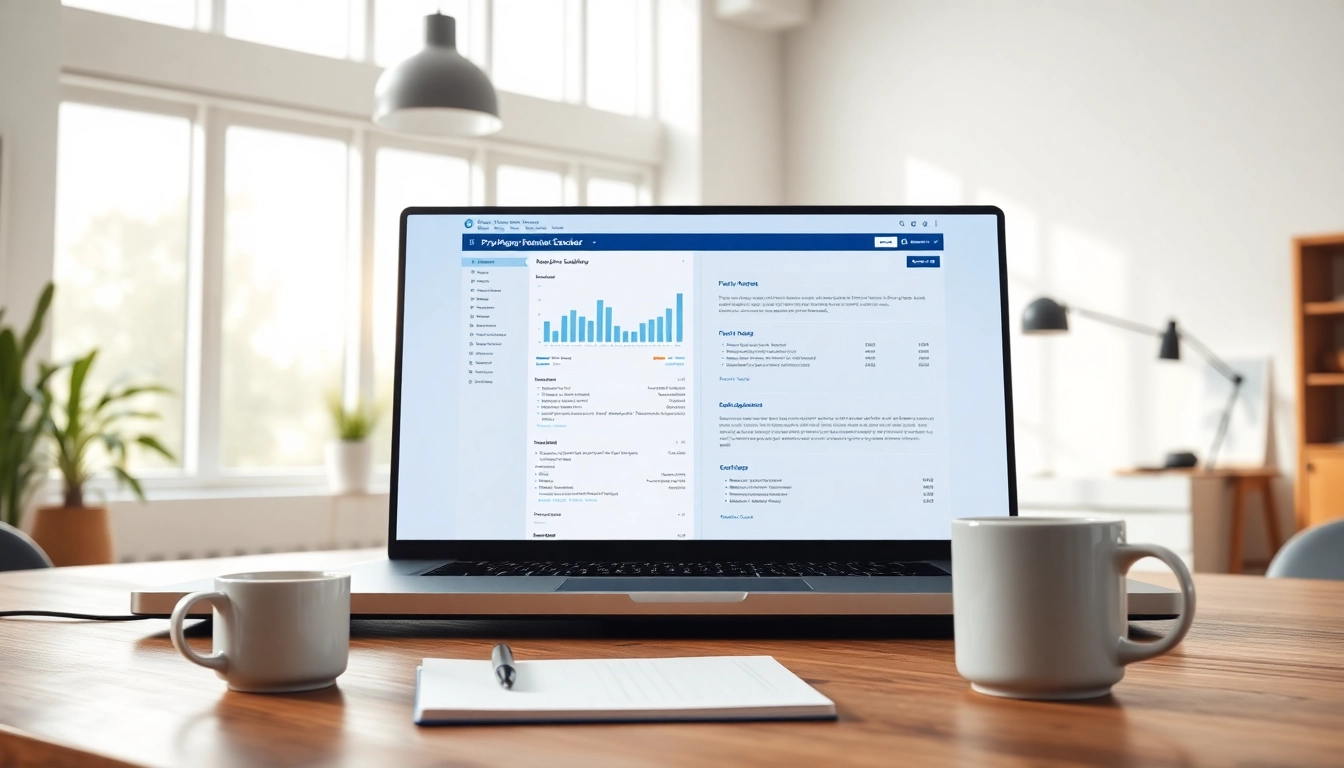Understanding the Importance of a Plagiarism Checker
In an age where the exchange of information is instantaneous and vast, the risk of unintentional plagiarism has risen significantly. A plagiarism checker serves as an essential tool not only for students but also for educators, researchers, and professionals in various fields. It can identify instances of copied content, thereby upholding integrity and originality in written works. Understanding its significance, functionality, and application can help individuals produce authentic content while avoiding academic and professional misconduct.
Defining Plagiarism and its Consequences
Plagiarism is the act of using someone else’s work, ideas, or expressions without giving appropriate credit, presenting them as one’s own. This unethical behavior can manifest in several forms, including:
- Direct Plagiarism: Copying text word-for-word without citations.
- Self-Plagiarism: Reusing one’s previously published work without acknowledgment.
- Patchwork Plagiarism: Piecing together information from various sources without proper citations.
- Accidental Plagiarism: Failing to cite sources correctly due to negligence.
The consequences of plagiarism can be severe. In academia, it can lead to expulsion, loss of credibility, and legal ramifications. For professionals, it can result in damaged reputations and loss of career opportunities. Thus, understanding plagiarism and employing a plagiarism checker is crucial for maintaining ethical standards.
The Role of Plagiarism Checkers in Education
Plagiarism checkers play a pivotal role in educational settings by providing a reliable benchmark for academic integrity. They serve as prevention mechanisms that help students understand and avoid misconduct. Institutions increasingly utilize these tools, not only to screen submissions but also as educational aids to teach proper citation and research practices. By doing so, they mitigate the risks associated with plagiarism and encourage honest scholarship.
Identifying Types of Plagiarism
A comprehensive understanding of the different types of plagiarism can guide users in navigating their writing responsibly. Here are some specific types of plagiarism that users should be aware of:
- Verbatim Plagiarism: Exact replication of text without citation.
- Idea Plagiarism: Using someone else’s ideas or concepts without acknowledgment.
- Source-based Plagiarism: Failing to distinguish between paraphrasing and direct copying, leading to misrepresented sources.
Familiarizing oneself with these forms reinforces the necessity of adequate referencing, thus enhancing the quality of academic honesty.
Features to Look for in a Plagiarism Checker
Not all plagiarism checkers are created equal. When selecting a tool, consider the following features to maximize accuracy and reliability.
Accuracy and Reliability of Results
At the core of a plagiarism checker’s effectiveness is its ability to provide accurate results. An ideal tool must utilize a comprehensive database that includes academic papers, journals, books, and online articles to compare against submitted content. Reliable plagiarism checkers also offer an originality score, indicating the percentage of text found to be similar to existing sources. This score informs users about the extent of potential plagiarism, facilitating appropriate corrective measures.
User-Friendly Interface and Accessibility
The usability of the plagiarism checker is crucial, especially for users who may not be tech-savvy. A clear and intuitive interface enhances user experience, making it easier to navigate through features such as document uploads, report generation, and feedback interpretation. Additionally, accessibility on various devices—desktop, tablet, and mobile—ensures that users can perform checks at their convenience, fostering a seamless workflow.
Additional Tools and Resources
Many plagiarism checkers offer additional features that enhance their value, such as:
- Grammar and Spelling Checks: Integrated editing tools that help users refine their writing.
- Citation Guides: Resources that clarify proper citation formats for various academic standards.
- Plagiarism Report Generation: Detailed reports that highlight sections of text that match external sources, complete with links to those sources.
Choosing a plagiarism checker with these supplementary tools can greatly enhance the writing and revision process.
How to Effectively Use a Plagiarism Checker
Understanding how to utilize a plagiarism checker can significantly improve the effectiveness of your writing. Below are steps and best practices to follow:
Step-by-Step Guide to Running a Check
- Select a Plagiarism Checker: Choose a reputable plagiarism detection tool that aligns with your needs.
- Prepare Your Document: Ensure that your text is in a suitable format for upload or copy-paste (usually .doc, .docx, .pdf, etc.).
- Upload or Paste Your Text: Follow the prompts to submit your document for analysis.
- Initiate the Check: Start the plagiarism check and wait for the system to analyze your content.
- Review Your Results: Examine the plagiarism report for highlighted sections and the originality score.
- Take Action: Based on the feedback, make necessary modifications to ensure your work is original and properly cited.
Interpreting the Results for Your Work
Understanding the results generated from a plagiarism check is fundamental to addressing potential issues. Most tools will provide an originality percentage, highlighting the proportion of text in your document that matches existing sources. High similarity percentages can indicate direct copying or insufficient paraphrasing.
Additionally, closely inspect the sections that have been flagged. The report often includes links or information regarding the source of the material, allowing users to assess whether the cited information has been used appropriately or requires revision.
Implementing Changes Based on Feedback
Once users have reviewed the plagiarism report, it’s essential to take corrective actions. This may involve:
- Rephrasing or Paraphrasing: Modify text to reflect original thought while retaining necessary source information.
- Properly Citing Sources: Ensure that all referenced material is correctly cited according to the required style guide.
- Removing Redundant Text: Eliminate any sections that do not contribute meaningful ideas to your work.
Through mindful implementation of these changes, writers can enhance the originality and academic integrity of their submissions.
Common Pitfalls When Using a Plagiarism Checker
While plagiarism checkers are valuable tools, there are common pitfalls that users should avoid to maximize their effectiveness.
Overreliance on Technology
One major mistake users make is placing too much trust in plagiarism detection software. These tools are not infallible; they may produce false positives or miss certain instances of plagiarism. Consequently, users should not rely solely on these tools but should also develop their skills in creating original content and understanding ethical writing principles.
Misunderstanding Plagiarism Reports
Another common issue is misinterpretation of the plagiarism report. Users can confuse a high similarity score with outright cheating rather than recognizing it may reflect commonly used phrases or correctly quoted material. Therefore, it is vital to analyze flagged sections in context to yield appropriate actions.
Ignoring Best Writing Practices
Lastly, some users fail to integrate best writing practices, leading to numerous issues, including excessive reliance on quotes, poor paraphrasing, or insufficient citation. Ineffective writing strategies can lead individuals to inadvertently commit plagiarism, reinforcing the importance of continual learning and adherence to best practices.
Emerging Trends in Plagiarism Checking Technology
The field of plagiarism detection is evolving rapidly with advances in technology, heralding significant changes in how plagiarism is identified and addressed.
AI and Machine Learning Innovations
Artificial intelligence (AI) and machine learning technologies are transforming plagiarism checkers by enhancing their accuracy and efficiency. AI can recognize patterns in writing styles, thus improving detection rates not only for direct copies but also for paraphrased content. As AI continues to develop, plagiarism checkers will become even more sophisticated in identifying and providing context for flagged materials.
Future Directions for Plagiarism Detection Tools
As technology advances, plagiarism detection tools are likely to incorporate features that aid in real-time checks and editing suggestions during the composition process. Imagine writing software that alerts users about potential plagiarism before they finish their documents. This proactive approach could significantly reduce incidents of plagiarism and promote adherence to academic integrity.
The Impact of Online Learning on Plagiarism
The rise of online learning has introduced a new dynamic in plagiarism detection as students increasingly complete assessments remotely. With easy access to vast resources online, the temptation for plagiarism can escalate. Thus, educators and institutions are compelled to integrate effective teaching strategies concerning academic integrity and ensure students are familiar with the tools available to help maintain originality.















Leave a Reply